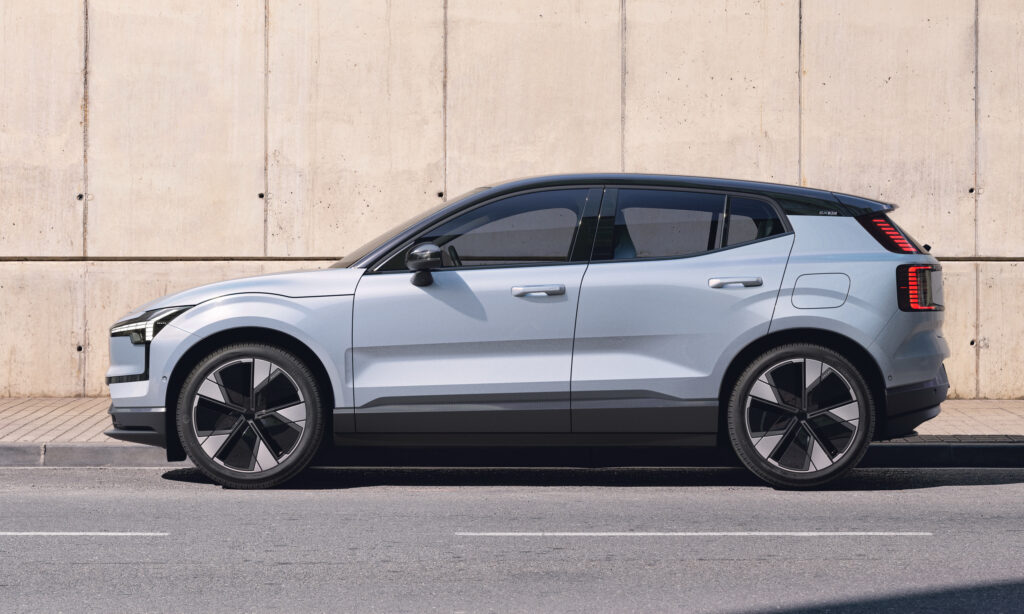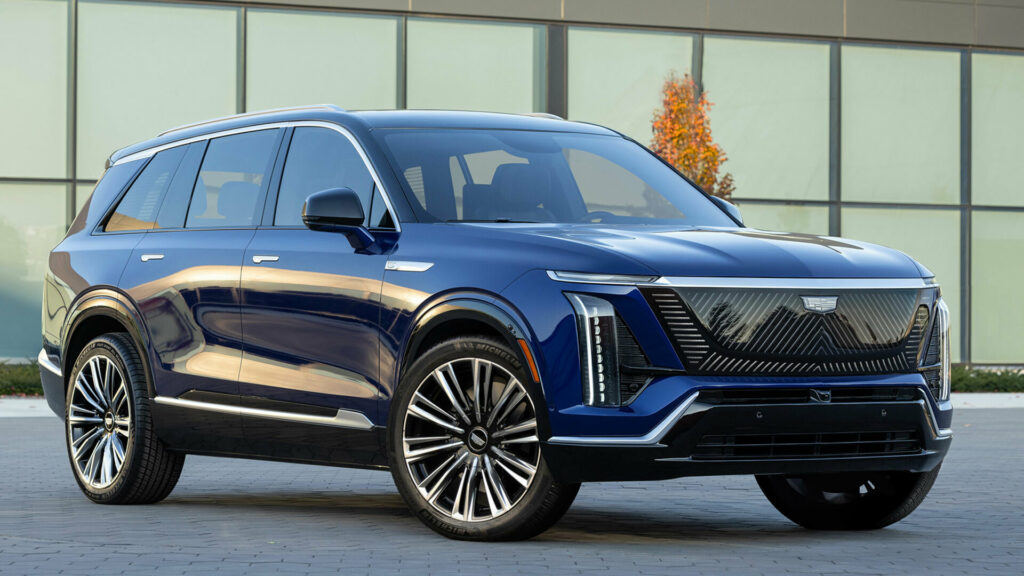ANAHEIM, Calif. — What was considered “plug and play” solution years ago, that being fleet electrification, is far more complicated. OEMs, vendors and transportation leaders are highlighting the continued challenges but also the benefits of electric school buses while also promoting collaboration as the industry enters uncharted territory. But continued funding is necessary.
Brad Beauchamp, EV product segment leader for Blue Bird, moderated a related session, “School Bus Sector: Rolling out the New Generation of School Buses,” on April 30 at the Advanced Clean Transportation (ACT) Expo that provided the perspectives of two student transporters, a leader of electrification at the nation’s largest school bus contractor, a mechanical engineer, and a smart charging technology provider.
Mike Bullman, director of transportation for the South Carolina Department of Education. described the uniqueness of The Palmetto State, as the DOE owns and maintains all 5,600-plus school buses. Bullman noted the fleet fuel makeup is currently 88 percent diesel, 10 percent propane, and three-and-a-half percent electric. He noted that his operation has taken a multi-pronged approach to alternative fuels with a focus on advancing technology.
He added that the South Carolina state specifications committee will be convening in the this summer, and gasoline will be on the agenda as well. “We feel that fleet diversity is very important as we certainly move into the future,” he said.
The South Carolina fleet travels 78 million miles a year and supports 77 public school districts. Those 78 million miles serve 365,000 students a day using about nine or 10 million gallons of diesel fuel annually and 1.2 million gallons of propane. There are 42 statewide school bus maintenance facilities and a staff of about 375 employees, with an annual budget of $170 million.
“It’s quite a large endeavor,” Bullman shared.
In addition to fuels, Bullman is focused on technology adoption. “We take a safety-first approach, but we want to make sure that technology is in there,” he said, adding that buses have tire pressure monitoring systems, stability control, camera systems, stop arm cameras, student management, GPS tracking. “All of that is part of this comprehensive multi-prong approach,” he added.
He noted that preventative and predictive maintenance are also important. Bullman and his team in South Carolina lead the inspection program offered at STN EXPO conferences.
Bullman’s department also has a statewide routing program and a comprehensive driver training program. “Additional investments in charging and fueling infrastructure is on our list and important to us, long cycle cost analysis for vehicle procurement, and staff training,” he said.
He added that South Carolina will continue to seek additional funding sources, noting that was the main driver for purchasing electric vehicles. In 2021, the state received $1.3 million in grant money to purchase four electric school busses and in 2022 received $6.6 million to purchase 16 EVs and then in 2024 they got another $6.9 million to purchase another 20.
He added that with the EVs, they are seeing cost savings with maintenance and operating costs, it’s the initial cost gap that needs to be bridged. “I personally and professionally believe that the school bus space is an ideal space for an electric vehicle,” he said. “It just fits. You’ve got long dwell times. You’ve got repeatable routes. Certainly, 80 to 90 percent of the routes in South Carolina can be covered quite comfortably with an EV bus.”
Bullman cited the current challenge is uncertainty surrounding federal funding for ESBs — which many in the industry would agree with. He noted that without grants, South Carolina would not have been able to purchase electric, citing the cost gap with diesel. He noted that data collecting will be key and help to convince naysayers that this is the right technology moving forward.
Sam Hill-Cristol, director of strategy and business development for The Mobility House, noted that V2G technology is a way to offset some of those costs. “We’re optimistic about the contributions that V2G revenues can make in the total cost of ownership calculation,” he said.
He noted that while there are ongoing V2G projects across the U.S., it is currently not scalable. He expects V2G to gain more popularity in the years to come.
Meanwhile, Lauren Lynch, senior mechanical engineer with the National Renewable Energy Laboratory (NREL), noted that the agency focuses on energy systems research and development with an eye on data collection. She said NREL provides data to fleets of school buses to enable fleet managers who are adopting the technologies to better understand their use and performance.
She said the fully funded program is a free service to fleets right now. Going forward, she explained that NREL will provide buses with a data logger that works in conjunction with telematics systems, so it won’t interfere with other data logging taking place on the bus. The data is transferred to NREL, who stores the data and conducts an analysis. Currently, they are working with seven different fleets and aim to collect data for at least 30 days. NREL is also hoping to capture a year after year performance and is coming up on year two working with Beaverton School District near Portland, Oregon.
“It’s been exciting, and we’re expanding our analysis to include a maintenance and cost study,” she shared. “We want to ensure that we provide a value back to the fleets. So, as part of our overall objective, we not only want to provide this analysis to the fleets, where we highlight key insights or maybe identify some areas of opportunity, but we also hope to utilize the data as an aggregated study for the vocation, utilize the data and other tools and models to inform driver developments or address any barriers within the industry.”
She explained that the data shows electric buses are more efficient than other powertrains. They do, she confirmed, have higher capital costs but have resulted in an overall lower dollar-per-mile cost when operating the same routes.
“We’re looking at all powertrains within the fleet to understand the performance of each and identifying areas of opportunity and what’s going well,” she explained, adding that the end-goal is to make the electric school bus data publicly available via the online tool FleetREDI. Currently, the website has data on heavy- and medium-duty findings.
San Marcos Unified School District in California also received about $30 million in grant funds for infrastructure and school buses. “It was very overwhelming,” Executive Director of Transportation Mike Sawyer said.
He noted that the district had 84 old diesel buses, so he started applying for grants — one of them being the Carl Moyer Memorial Air Quality Standards Attainment Program grant in California and the Zero Emission School Bus and Infrastructure Program — and the money kept flowing.
To help him navigate all the funding, he said he reached out to partners, including Engie, which helped San Marcos find inefficiencies in charging infrastructure. Engie helped San Marcos create “one of the biggest” charging infrastructure bus yards. Phase one was completed with 40 EV chargers, six of which are 120 kW, the remainder being 30 kW chargers. Phase two, which is about to break ground, will bring the district to a total of 75 chargers.
The location holds about one megawatt of solar and 1.5 megawatts of battery storage, and it includes a 60kW diesel generator to serve as backup if the power goes out. Sawyer noted SMUSD currently has 33 electric buses on the road.
Providing a Service
Meanwhile, First Student operates over 45,000 school buses across 43 states and eight Canadian provinces. Of those, 450 are electric vehicles.
“EVs, they are providing not only cleaner and quieter rides to school, but these kids are arriving to school calmer,” said Jennifer Harp, the contractor’s vice president of the electric vehicles program, discussing a recent project in rural Westville, Illinois that electrified its entire fleet of 17 school buses with help from the U.S. Environmental Protection Agency Clean School Bus Program, IRA tax credits, and the Illinois Volkswagen Environmental Mitigation Trust program.
“They had some limited resources,” she said, adding that they were on a lease property and needed an infrastructure solution that would avoid high costs.
She added the company integrated its First Charge, a trenchless, flexible and quick-to-deploy. purpose-built charging hub with that removes the barrier of having to trench locations.
Harp also noted First Student currently deploys 14 First Charge units. It took about nine months to deploy the one operating in Westville.
“If we want to follow Westville’s playbook for electrification success, we really need to remember that continued success in this space requires continued funding incentives from all of our government sectors,” she said. “It also requires that we minimize costly infrastructure as much as possible. Requires partnerships and a willingness to share those learnings. …With the right strategy and infrastructure, school bus electrification is not only possible, it is absolutely practical.”
Related: (STN Podcast E257) The Paths Forward: AI, Clean Energy, Manufacturing Discussed at ACT Expo
Related: Gallery: ACT Expo 2025
Related: Cummins CEO Says Mixed Fuel Approach is Key for Commercial Sector
She noted the conversations on battery-electric adoption at ACT Expo have evolved from the initial belief that it could be a plug-and-play option. “If you’ve been here long enough, you know that it’s not that simple,” she shared. “Fleet electrification takes partnerships, very strong partnerships, high increased project coordination, industry standardization, and, above all else, patience.”
Meanwhile, The Mobility House provides smart charging to fleets to over 2,500 sites globally, 100 of which are location in North America. Hill-Cristol shared that the grand vision is to achieve “zero emission transportation at zero cost,” he said. “We think we can get there in some cases, through the technology that we provide.”
He explained that vehicle grid integration is an umbrella term The Mobility House uses to talk about a suite of use cases that are becoming more common with the next-generation electric school bus projects.
“The days of going to the utility, getting a totally new service, 100 percent paid for, putting in enough capacity for every charger to be on at once, and then just turning it on and not worrying, I think those days are pretty much behind us,” he said, adding that now customers are looking for ways to solve challenges, like vehicle-to-grid, charging off peak and backup power integration.
Hill-Cristol also mentioned off-grid supplemental solutions, which consists of using solar storage or a backup generator to help with capacity challenges and the delay in receiving chargers. All of this is also provided by The Mobility House.
He elaborated that the off-grid solutions can be either a long-term or temporary solution. For instance, some districts are using it as a bridge as they wait for their infrastructure, whereas some districts can solely use it as a charge management system. Other use cases include a micro-gird if districts need additional power on site.
“Depending on where you fall on that spectrum, and the investment that you’re making, I think that would lead you to the conclusion of whether this is a two-to-five-year solution or whether this is going to be something that sticks around,” he said. “Because with the right combination of technologies, you’re also going to get operational cost saving.”
The post Funding, Data and Resiliency Needed for Electric School Bus Success appeared first on School Transportation News.










